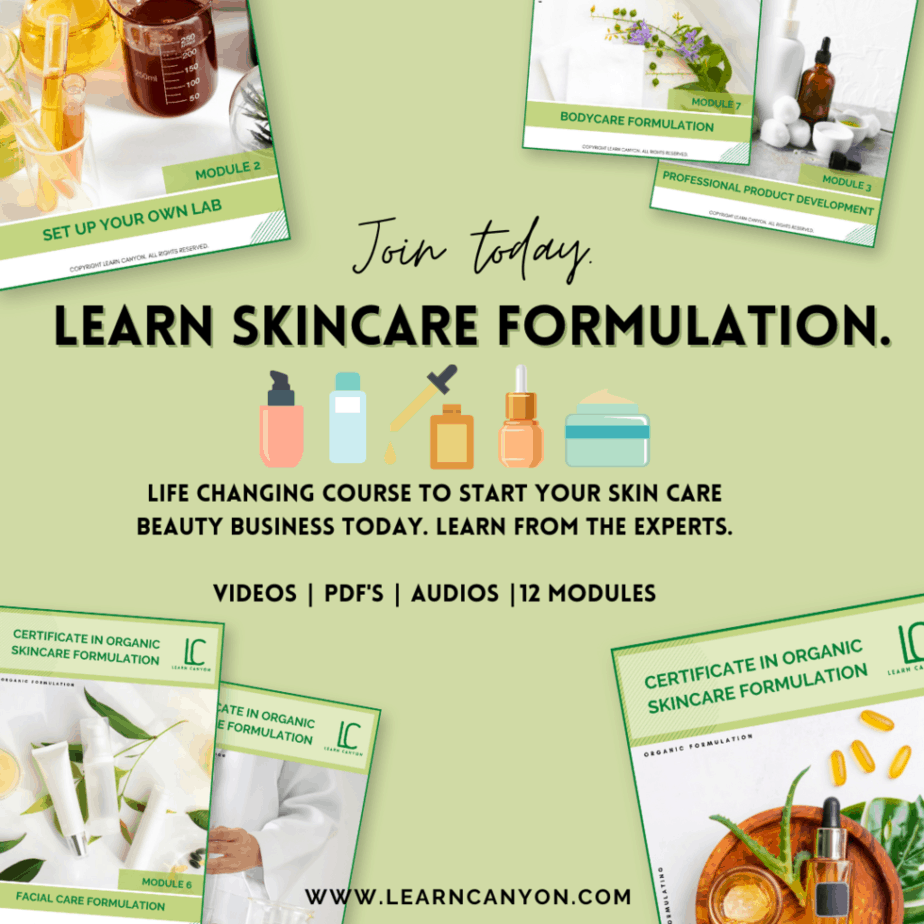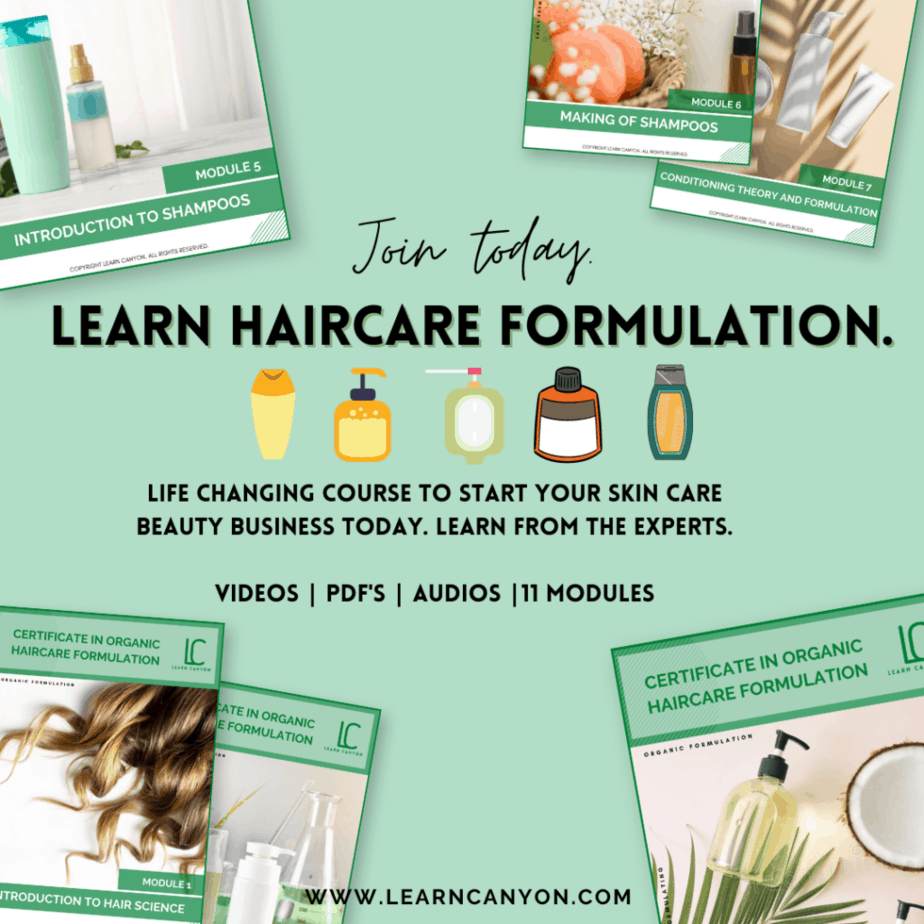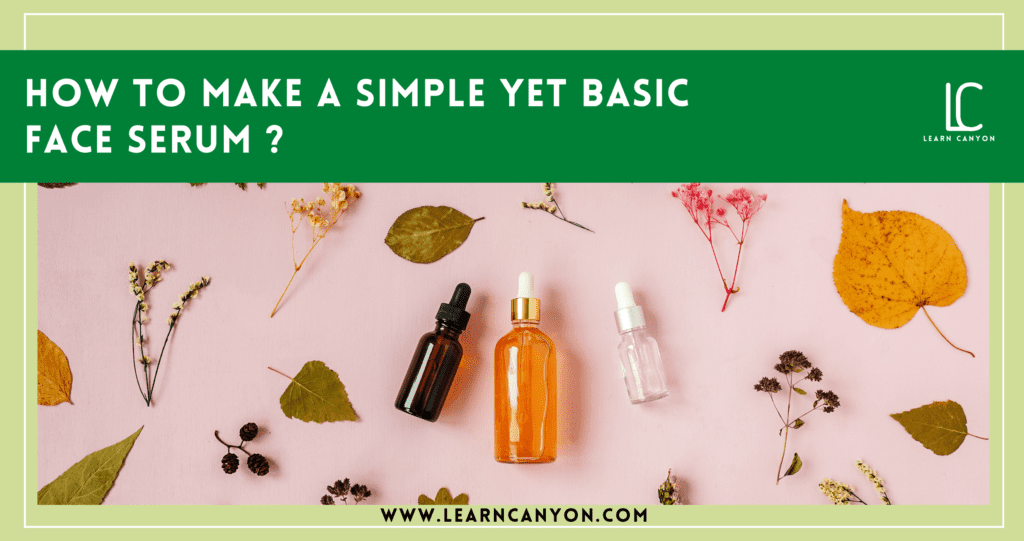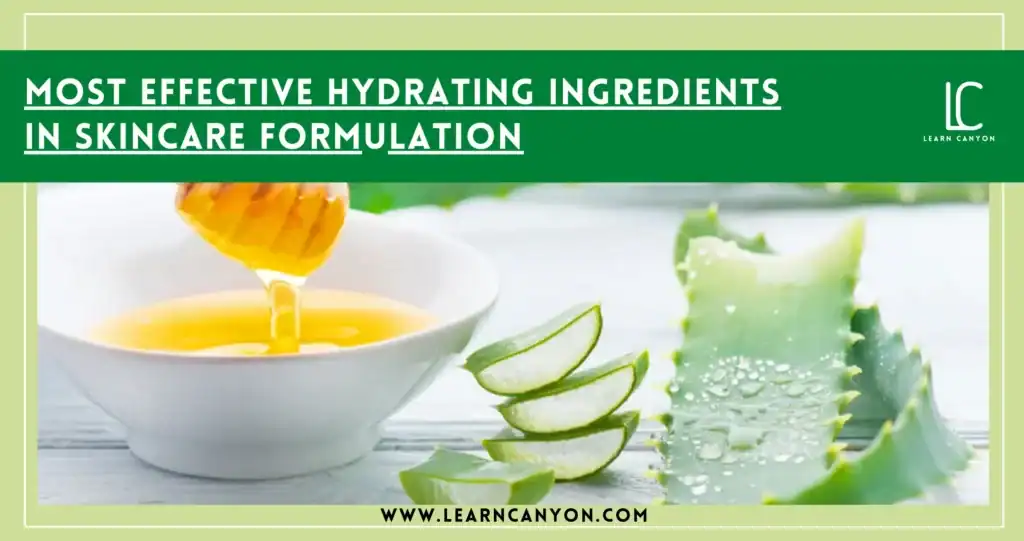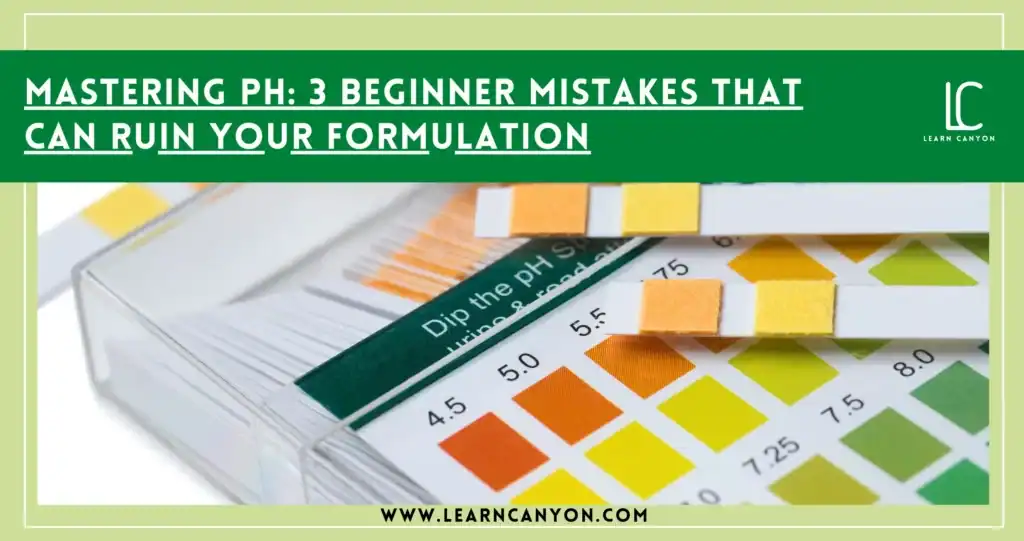“Life was so simple when I was a child”, or “Oh! I want to go back to my golden childhood days.” These are some of the common dialogues you hear when you cross into your thirties.
Not only do you come across the realities and challenges of life but you also start facing skin problems and issues with maintaining your look.
In this blog, we shall tackle one such skin problem with a simple product that can be made at home, A SERUM. So, today we shall learn how to make a face serum at home?
As you get older, our skincare routine changes from the simple cleansing in our teenage years, to the application of a sunscreen or moisturiser in our college days and early adulthood, to the ever-increasing list of products we need in our 30’s.
This is the age when we should start to think about the fine lines near our eyes, but we are also struggling with the oily T-zone. We also start realising the effects of the long exposure we had in the sun in our carefree days and a lot of reality dawns on us. We feel that a lot of water has gone under the bridge. But relax! all is not so gloomy.
All you need is a good skincare routine and good products to implement it.
Here we are going to help you figure out exactly that!
It is possible that you may be following a good skincare routine. But, does that contain a Face SERUM?
Your skincare routine is indeed incomplete if your beauty kit doesn’t have a face serum. Face serums are a must to be followed after the regular cleansing, toning, moisturising routine for its amazing beauty benefits.
You may think how many steps should a skincare routine include?
There are 7 steps a skincare routine should include
- Facial Cleanser – For deep cleaning
- Facial Essence – For deep nourishing
- Facial Cream – Facial Cream
- Facial Toner – For even tone skin
- Facial Serum – For the Mandatory moisturization
- Facial Elixirs – For deep cleaning
- Under eye cream – To vanish the tired look away.
Download the 7 step skincare routine formulation (professional)
Face serums can help with a variety of skin problems. Applying a face serum might help you avoid a number of skin problems.
Face serums are made with elements that are good for your skin. These ingredients are rich in nutrients that keep your skin looking young and healthy. Many face serums on the market are loaded with potentially dangerous substances that could affect your skin in the long run. Exposing our skin to such toxic items is not really safe.
Hence, It is best to stick to either natural or homemade products for our skin. So, here we are to help you do both
Learn how to make natural products with the various courses we offer at LEARN CANYON, and today we shall see a homemade face serum.
Face serum has several advantages, including the ability to protect your face from potential harm, soothe sensitive skin, and reduce the appearance of fine lines and wrinkles.
What is a serum?
Normally, facial serums are usually an oil- or water-based system that delivers highly concentrated, targeted nutrients to help with one or more skin issues. Alternatively, Serums can be gel-based or completely liquid.
Serums, while not as thick as conventional moisturisers, can provide your skin with extra hydration. This is due to the fact that they contain nutrient-rich substances that are meant to permeate the skin and moisturise it deeply.
Face serums are skincare treatments that enrich your skin with a variety of health-promoting ingredients. They come in a variety of shapes and sizes to meet the diverse skincare needs of various people.
One can be used alone, two can be used together, or different ones can be used on different sections of your face.
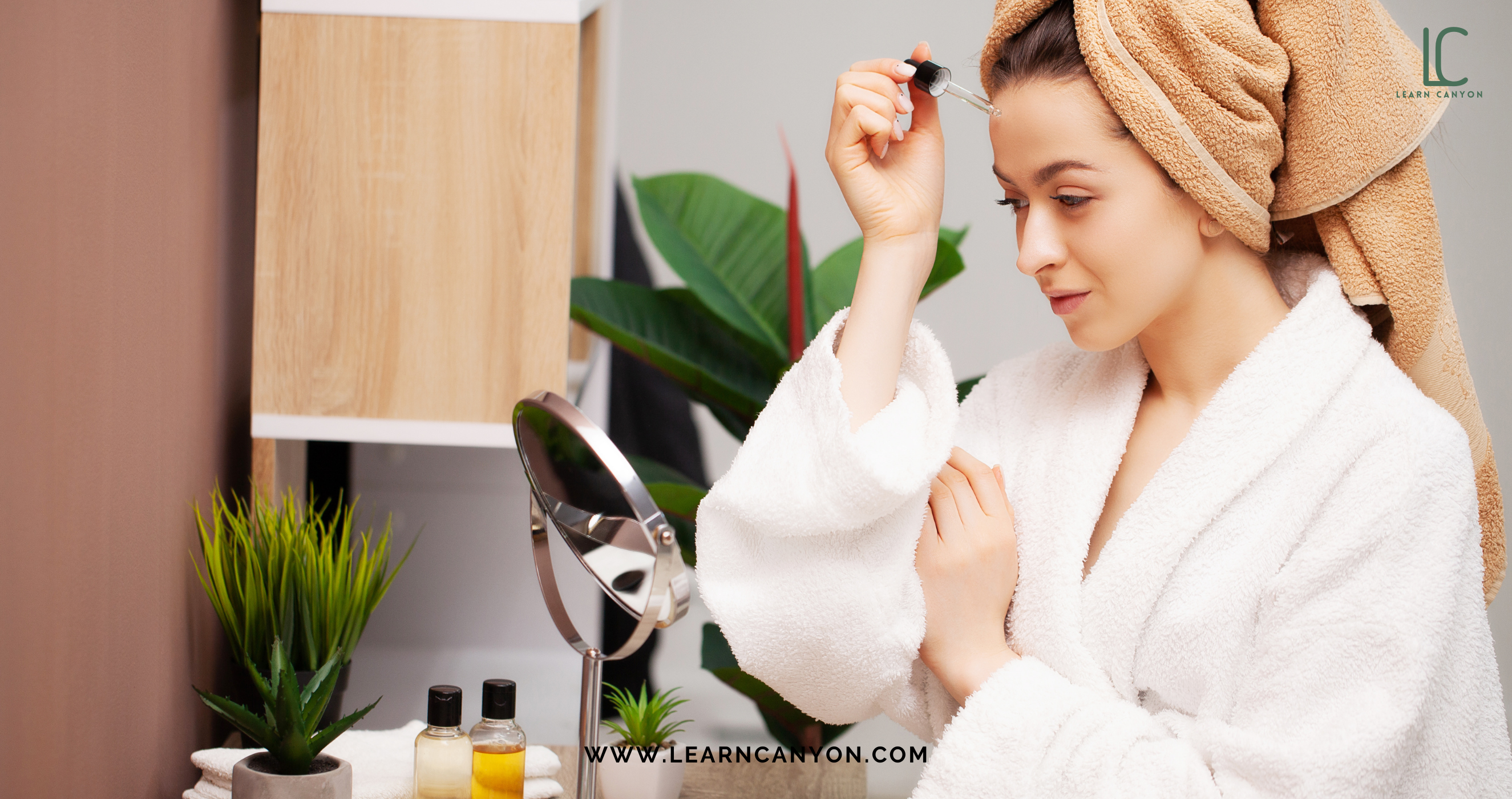
Serums should be applied after cleansing but before moisturising, though you can use a serum as a stand-alone product if you have oily skin.
There are also what we call the NATURAL FACE SERUMS. They are the products that provide all the benefits mentioned above without the use of any artificial ingredients or harsh chemicals.
If we formulate our own serums and try to make them at home, we get the opportunity to personalise the formulation with nutrients that are best for our skin.
To make your serums at home all you will need are a few mixing spoons, bowls, a small pipette, a funnel to pour your product on a container and a dropper bottle for storing the product.
Formulating your serum:
It is not rocket science. All you need to formulate a good and effective product are a few basic ingredients like carrier oils, essential oils and of course the vitamins like vitamin C, E, etc.
The choice of carrier and essential oils that can be used depends on the type of skin and its condition. Below we have tried to categorise the oils depending on skin conditions and skin types. All you need to do is select the best combination for your skin.
FOR DIFFERENT SKIN TYPES:
| For Oily Skin | For Dry Skin | For Normal/ Combination Skin | For Sensitive Skin |
| Jojoba oilGrapeseed oilAlmond oilRosehip seed oilAvocado oilGeranium EO Bergamot EOTamanu OilApricot Kernel Oil | LavenderAlmond oilHelichrysumMyrrhAvocado oilFrankincenseGeraniumCarrot seedCucumber seedRosehip Seed OilSweet Almond OilAvocado Oil | Sweet almond oilAvocado oilGeranium EORosehip seed oilBergamot EOJojoba OilSunflower Seed Oil | Lavender EOFrankincense EOSandalwood oilSweet almond oilRosehip seed oilAvocado oilGeranium EOBergamot EO |
FOR DIFFERENT SKIN CONDITIONS:
| For Dark Spots | For Acne Scars | For Anti-Ageing |
| RosemaryClary SageTurmericChamomileFrankincenseNeroliArgan oilGeraniumLavenderTea tree | Rosehip seed oilAlmond oilCoconut oilCedarwood EOCarrot seed EO Lavender EOGeranium EO | LemonSandalwoodClary sagePomegranateLavenderYlang-ylangRosemaryRosehip Seed OilSweet Almond OilAvocado Oil |
Even though we have tried to list some popularly used essential oils (EO) and some carrier oils that can be safely used in serum formulations there are certain never to go wrong selections too. Like these essential oils which can be used in any serum, like:
Lavender Essential Oil: functions as aromatic and therapeutic
Lavender essential oil is a multipurpose EO that has therapeutic properties that may be used by people with various skin types. It can, for example, kill germs, which means it can help prevent and treat acne breakouts. Lavender helps the healing process by unclogging pores and reducing inflammation.
Lavender oil can also help to lighten dark spots and discolouration on the skin. Its properties may also aid in the reduction of blotchiness and redness in your skin.
Finally, this substance can help to minimise wrinkles. It’s high in antioxidants, which protect your skin from free radicals, which are one of the main causes of wrinkles.
Geranium Essential Oil : functions as aromatic and therapeutic
Geranium essential oil is another flexible ingredient that may be included in any homemade face serum recipe. Antibacterial, antimicrobial, and antiseptic characteristics are all present. As a result, it’s a good choice for treating acne, skin irritation, and infections.
This chemical also helps to keep oily skin under control. It works to bring your skin’s sebum levels into equilibrium and to open up its pores. This allows your skin to breathe more easily, and it has the ability to keep it appearing younger for longer.
The most common carrier oils used in formulating a serum is
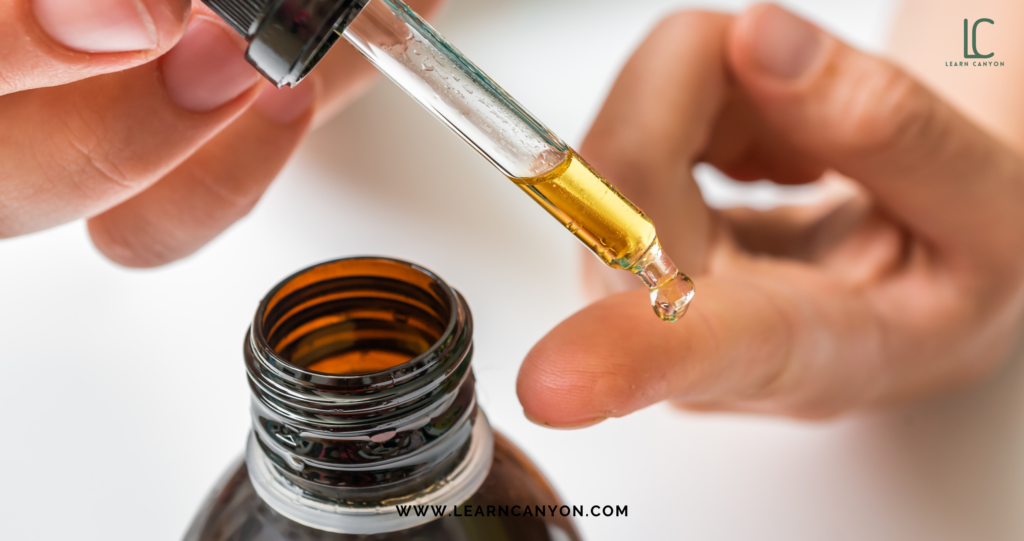
Sweet almond oil: Acts as an emollient
Vitamins A and E, as well as omega-3 fatty acids and zinc, are all found in almond oil. As a result, it’s a great choice for almost any form of homemade face serum.
The positive effects of almond oil on your skin are remarkable. It has the ability to:
- Reduce puffiness and dark circles beneath the eyes
- Improve your skin’s colour and tone.
- Dry skin should be treated.
- Acne breakouts will be reduced.
- Assist in reversing solar damage
- Scars will be less visible.
If you’re looking for a versatile ingredient to add to your next serum recipe, almond oil is a great option.
Along with these carrier oils, and essential oils we can also add some other ingredients like Aloe vera, glycerine, rose water, any emulsifier or solubi of your choice etc
Aloe Vera: functions as an active
Aloe vera aids in the elimination of acne-causing germs, the healing of scars, and the lightning of blemishes. It also helps to hydrate the skin and has been demonstrated to minimise wrinkles. As a base for makeup, start the day with a face serum made with aloe vera gel, jojoba oil, and frankincense essential oil.
Glycerin: acts as a humectant
If you don’t want to use oil, blend glycerin (a natural humectant) with aloe vera. Your skin will feel smooth and nurtured, without being oily.
Rosewater : acts as solvent
Rosewater is anti-inflammatory, moisturising, and relaxing, and it has numerous skin advantages. Its astringent and antibacterial characteristics make it suitable for all skin types. The rosewater will separate from the oils as it is stored, so give the bottle a good shake before using to blend them.
Now let us see a general formula of oil serum for NORMAL SKIN.
Learn to formulate:
A simple hyaluronic + caffeine serum:
Check out the related articles to
Formulate a serum with rosehip seed oil
Formulate a serum with hempseed oil
Formulate a serum with moringa oil
People with normal skin can choose from a wide variety of essential oils when designing their face serums. Some of the best choices of oils included to make 25 ml:
- Sweet almond oil – 12 ml
- Avocado oil – 4.5 ml
- Rosehip seed oil – 7 ml
- Vitamin E – 1 ml
- Geranium essential oil – 0.3 ml
- Bergamot essential oil – 0.2 ml
To make this serum all you need to do is mix properly each ingredient in a mixing bowl or a beaker using a glass rod.
Now transfer the formula in a suitable container.
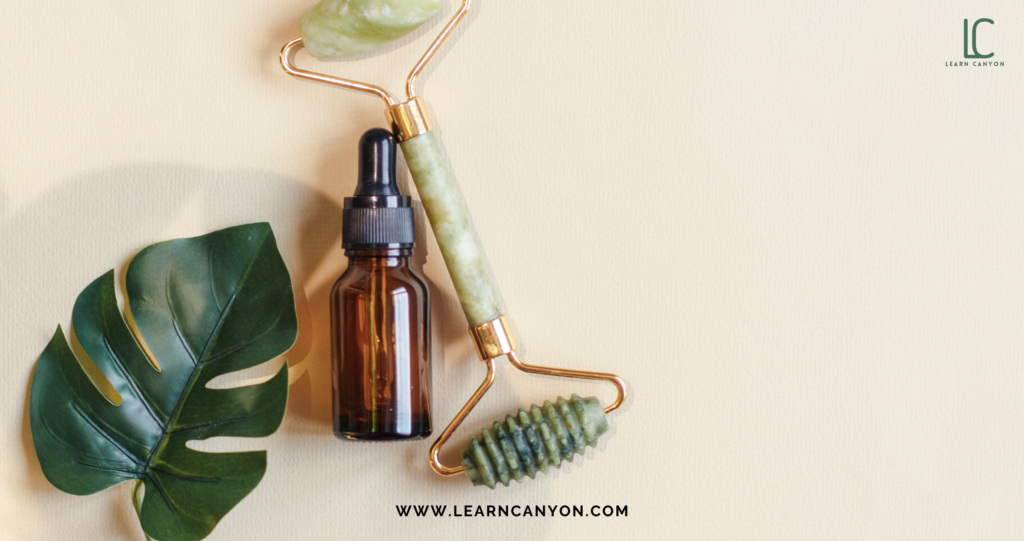
How to use an oil serum
Less is more when using a serum. Only use 1–2 drops at a time just enough to lightly cover your face and neck. Put a few drops of serum in the palms of your hands and gently pat it over your face until it’s absorbed.
A little rubbing won’t induce wrinkles; skin requires stimulation to strengthen, and it won’t harm elasticity.
After the serum has dried and absorbed, apply your preferred moisturiser to seal in the active ingredients and allow them to perform their magic.
Learn to make the best face oil serum
Remember; more serum does not equal good results.
More than required serum could mean you run the risk of irritating your skin and limiting the serum’s capacity to penetrate it.
To conclude we can say that the face serum is a potent preparation designed to effectively correct your skin problems. The best thing is to try some combination of the aforementioned ingredients according to the skin types and check the results. Enjoy formulating!
If you enjoy formulating skincare products then we have a perfect fit for you.
Formulate 100 Organic Skincare Formulas today. Join 100 formulations in 100 days challenge. Get your copy of “For your cosmetics” 100 organic skincare formulations.
Frequently Asked Question
Can this serum be formulated at home?
Yes, this serum can be formulated at home. It is a tried & tested formula by our community. Our students love to formulate it and sell it in the market.
If you want to learn how to make skincare products head over to this link : www.learncanyon.com.
Can I sell this formula?
Yes of course you can.. It is a tried & tested formula by our community. Our students love to formulate it and sell it in the market.
Read before How to selling a cosmetic product in the market
What are the benefits of using vitamins?
Vitamins help repair the underlying layers of skin by stimulating collagen production, which helps prevent fine lines and wrinkles from forming. Vitamin C in serum can also lighten age spots and even discoloration.
Is there a method to ensure that your serum performs at its best?
Yes. Effective cleansing followed by exfoliation, using a good peeling scrub twice a week, will help to eliminate dirt, grime, makeup and pollution effects. This will maximise serum absorption. Exfoliation will also help in removing the dead skin cells and flakes and prepare the skin for the benefits of the serum by better absorption into the skin.
Why do you apply a serum before you apply a moisturiser?
In order to obtain the best effects, serums should be the first products that touch your skin after cleansing and exfoliating. This is because the cream’s compositions are thicker and its contents build a protective layer over your skin so, the serums won’t absorb as well if you apply them after your moisturiser.
When is the best time to use a serum?
Experts advise that you apply a face serum both in the morning and at night. Most people’s regular skincare routine should include them as the second step.
After cleansing, but before applying any moisturiser or sunscreen, apply your face serum in the morning. At night, cleanse, apply your serum, and then apply any other skincare products you choose.
To get the most out of your face serum, make sure you follow the steps in this order. When moisturisers and sunscreens are applied first, they can prevent serums from accessing the deepest layers of your skin, limiting their effectiveness.
Can you apply the serum near your eyes?
The thinner, more sensitive skin around your eyes is not suited to face serums. We do not recommend applying your serum any closer than your orbital bone. To address eye area concerns such as lines, wrinkles, puffiness, or dryness, use an eye cream made specifically for that area.
Get your free facial serum ebook.
Can you apply the serum near your ey


